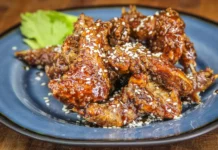Answer this honestly…How many of you have had a conversation with a friend where one of these talking points came up?
- Dude, My Black Flash camera is visible!
- I can see my No Glow camera flash! I know it’s spooking deer!
- I don’t know what’s wrong, I was just looking through some trail camera photos and it looks like I can see the flash from my Black out camera! I have two of them out there?
Over the years, we’ve seen this topic come up on social media over and over. Some folks immediately understand what is going on, others are baffled.
If you can see the flash from a Black Flash camera what the heck is going on? All of this boils down to two scenarios…. You don’t really have a no glow camera OR there are multiple cameras in one area and one camera is capturing another camera’s flash at night.
940NM Wavelengths To Humans and Whitetails
No Glow, Black Flash, Invisible Flash, Black Out are all trail camera terms referring to the same exact thing… Any trail camera flash unit utilizing a 940nm LED, which in the Electromagnetic Spectrum is beyond the UV Spectrum and invisible to the human eye. But what about whitetails?
When you think about how ungulates see, in what colors, and how those colors react to UV it becomes pretty damn interesting. Ungulates have dichromatic vision, they see yellow and blue colors with everything else being black/white and gray. Blue colors fall between 430-520nm wavelengths and yellow falls between 565-580nm wavelengths. So theoretically, if your trail camera is not putting out light between those spectrums, deer are not seeing it OR at least not in the same color as we see it. Now, lets pull it back to trail cameras.
Types of Flash
You have 3 categories of flash types in trail cameras, WHITE,RED, and BLACK.
White Flash trail cameras give you an actual flash. Hobbyist folks seem to really gravitate towards these types of cameras because they put out color night images. This type of light falls into the lower range of the UV Spectrum at approx 300nm.
Red Flash also called IR trail cameras include any bulb that puts out light at wavelengths between approx 625nm up to 750nm. At the bottom end light is visible at the upper end it is less noticeable.
Black Flash, aka invisible flash, no glow, black out, or whatever else you want to call it, also falls into the IR spectrum but at the upper end with a wavelength of 940nm. General science tells us that mammals cannot see light at this wavelength. Really, only amphibians and reptiles can see this type of light.
IR and Black Flash cameras have added HW to capture light at these wavelengths. This is the purpose of the cameras IR filter OR the camera could have a dedicated night sensor and lens making it a dual lens camera.
Why Can You See It?
Scenario 1: If you can see the flash with your naked eye, you certainly don’t have a 940nm flash unit. Don’t get this confused with a faint red glow before the actual flash. At times, mainly when the LEDs first get power they will likely emit some light below the 940nm range. This happens well before the flash actually goes off.
Scenario 2: You have two cameras setup in some what close proximity to one another. One camera is picking up the other’s flash. The first time it happens it’s kinda of weird but when you step back and think how trail cameras work with specific flash units and IR filters it makes a whole lot of sense.
If you find yourself in either scenario don’t panic, the wool hasn’t been pulled over your eyes. What you are seeing is completely normal in the trail camera world, it just doesn’t happen all that often because there’s not many folks running cameras on top of one another. With proper setups and going through our “spook proof equation” it’s unlikely you are actually spooking whitetails with your trail cameras.















































